Less is more. It’s a well-worn adage that works particularly well in the automotive world. Specifically, less weight results in more performance which, in turn, results in more fun.
BMW has subscribed to this premise for decades, creating a lineage that began with the E9 CSL ‘Batmobile’, continued with the likes of the E30 Sport Evo, E36 Lightweight, E46 CSL and E90 CRT and now culminates in the F82 M4 GTS, M Division’s idea of the ultimate road-racer.
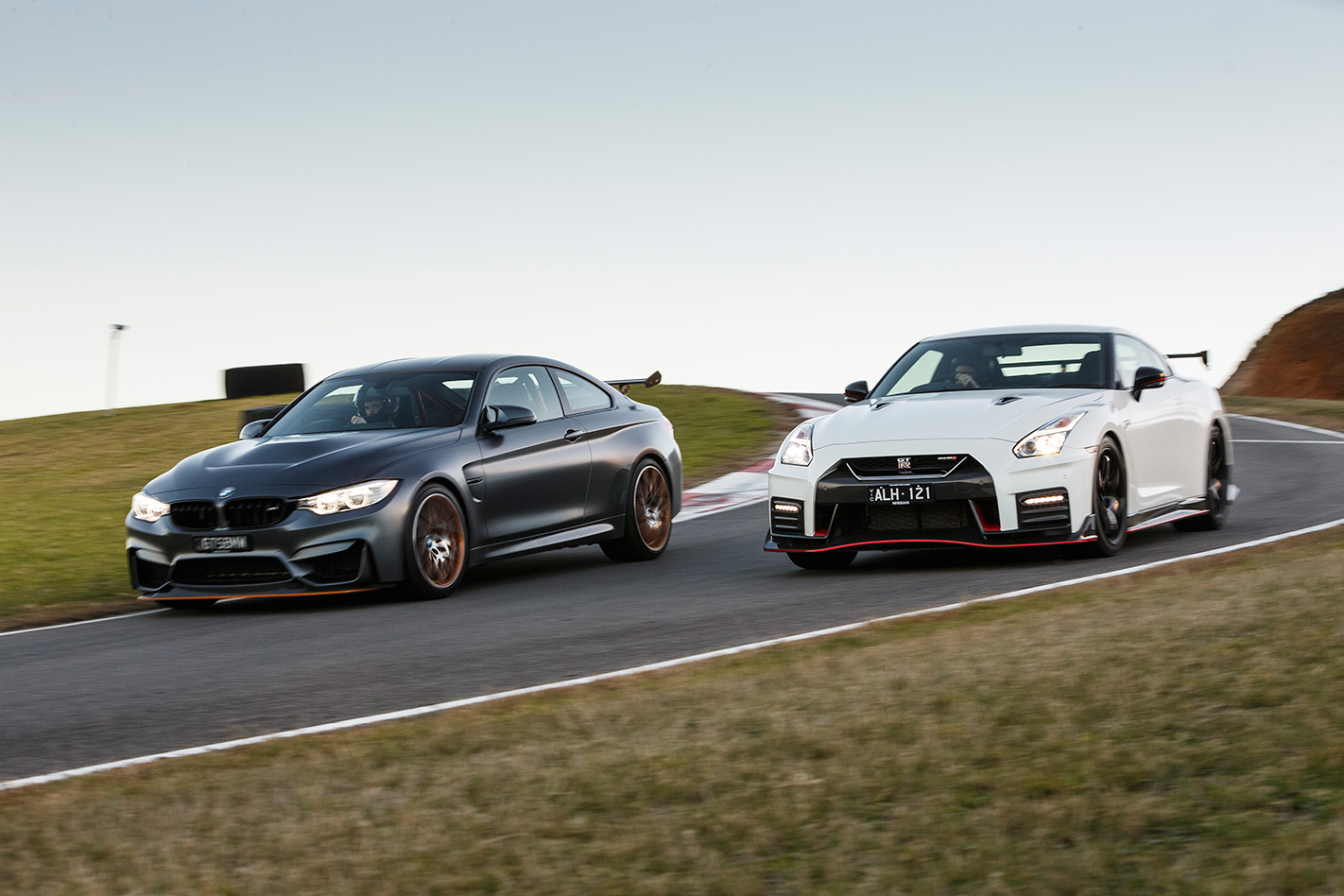
Further weight is lost courtesy of a titanium exhaust, carbon ceramic brakes, lightweight centre console and door trims and replacing the rear seats with glassfibre panels coated in Alcantara. For those truly averse to kilograms, a further 7kg can be dropped courtesy of $21,560 carbon wheels.
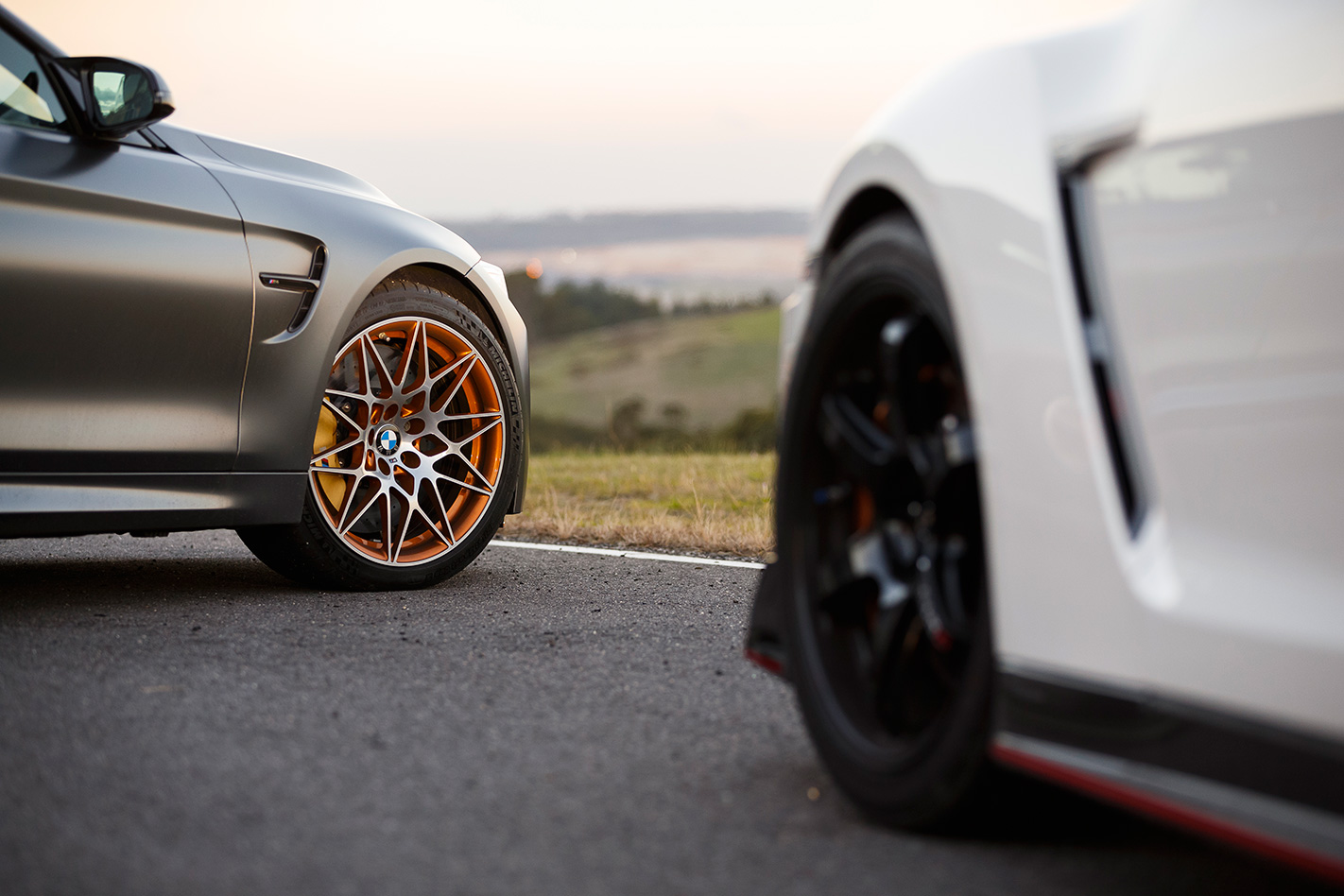
BMW originally planned to build just 700 GTSs, though that total swelled to 803 customer cars (830 including development cars) by the time production concluded, plus another 200 mechanically identical DTM Editions. No doubt thanks to that extra production, Australia was able to double its allocation to 25 cars (plus 10 DTMs), but all were sold before they were even loaded on the boat.
You can buy a Nissan GT-R NISMO no problem, though at $299,000, $110,000 more than a standard GT-R Premium, it’s likely to be even rarer than the M4 GTS. On the face of it, this might not be the most obvious comparison, but both are track-focused, hardcore versions of regular sports coupes powered by twin-turbo six-cylinder engines.
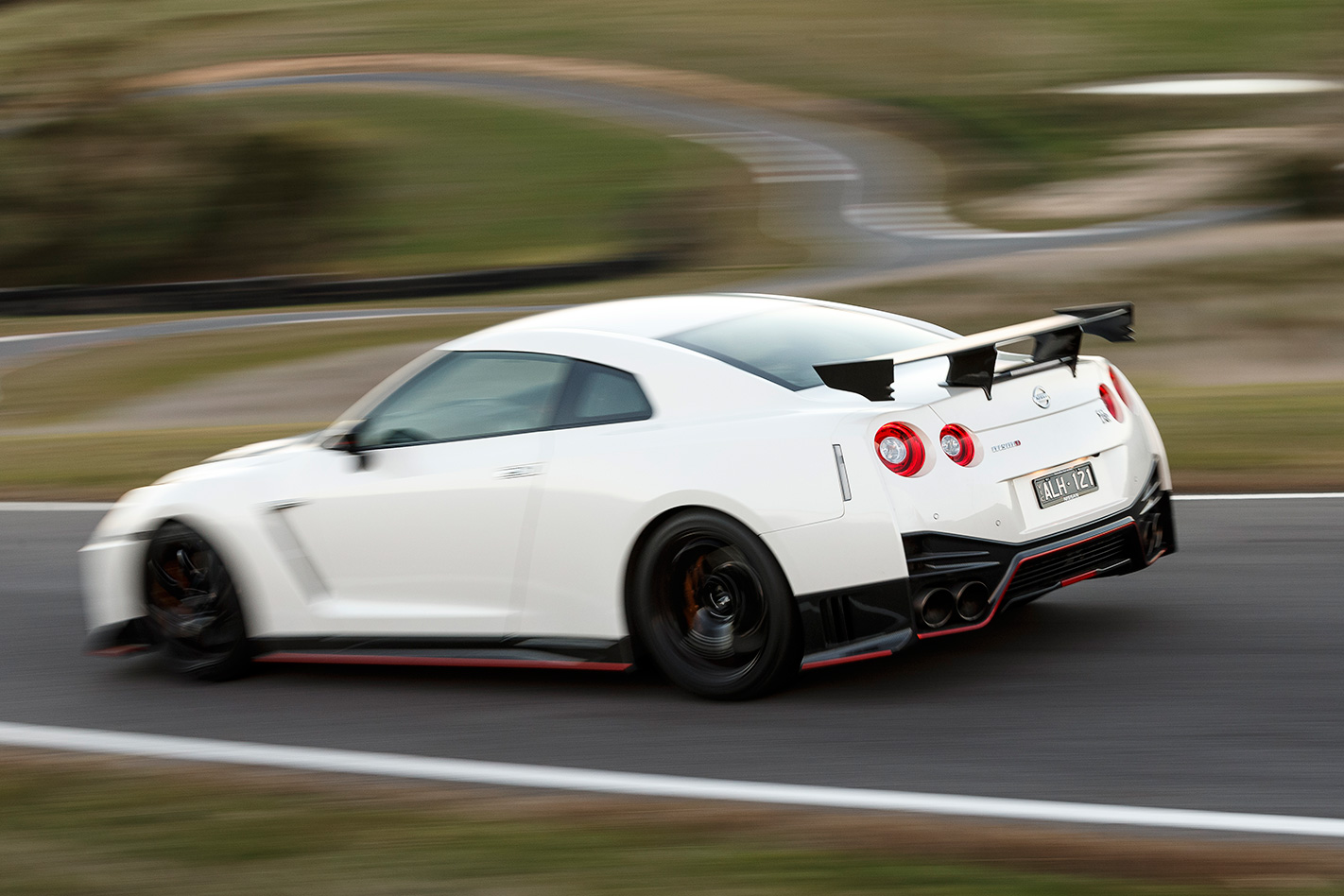
Yet, unlike the BMW, the Nissan retains all its creature comforts, including its rear seats, which no doubt hurts it on the weighbridge, but does wonders for its day-to-day useability. Surprisingly, if you’re prepared to make some small concessions, the NISMO is every bit as habitable as the standard GT-R.
Road noise from the Dunlop Sport Maxx GT 600 semi-slicks (255/40 ZR20 front; 285/35 ZR20 rear) is considerable and like previous R35s, the NISMO’s stiffer suspension makes selecting Comfort mode a must at the start of every journey, but this is far from a rough-riding track special.
There are still plenty of clunks from the gearbox and low-speed chatter from the diffs but paradoxically, noises that seem somewhat agricultural in the standard R35 suit the NISMO’s more focused personality. When it comes to focus, though, the BMW’s is razor sharp.
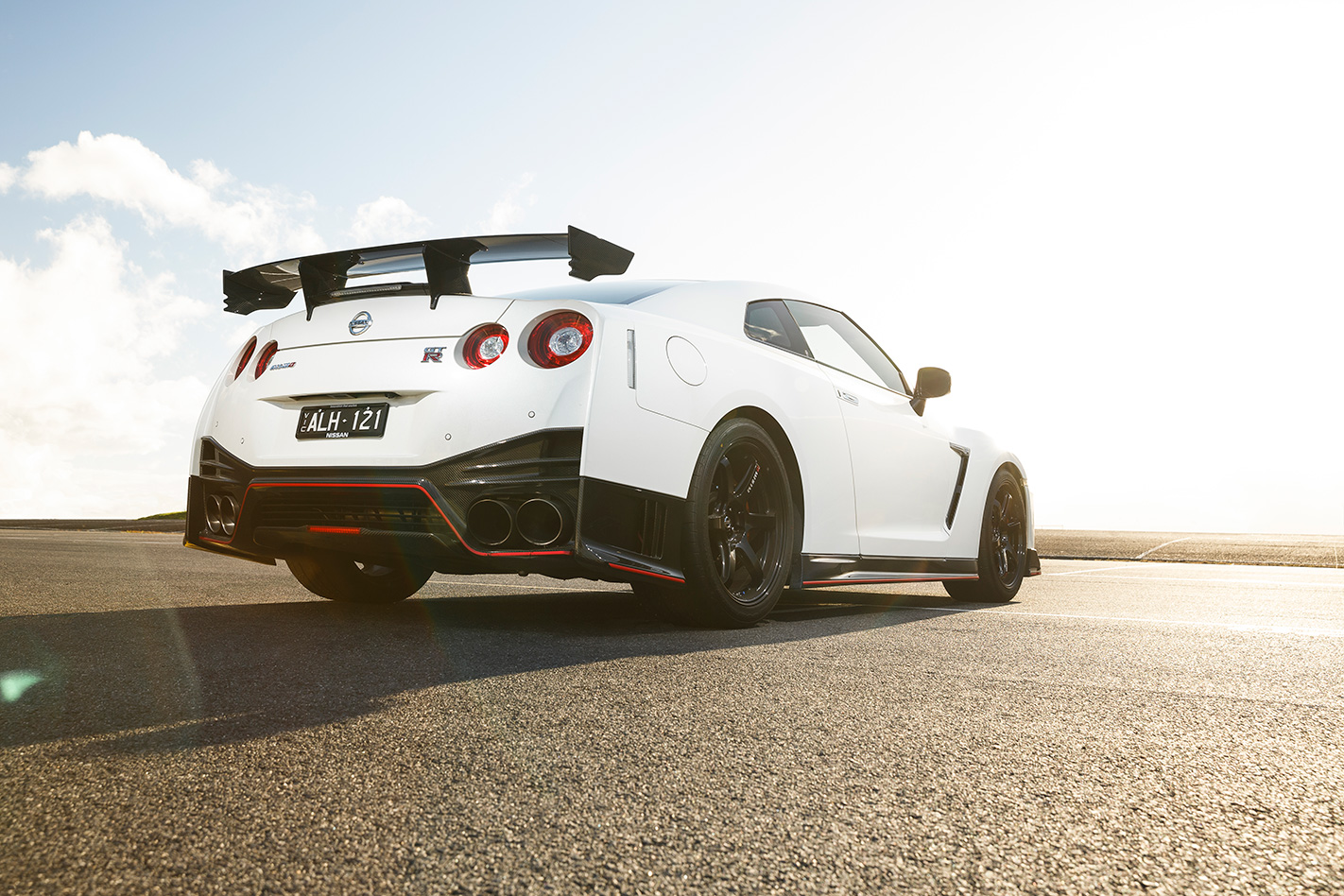
The lightweight Recaros hug you tightly – as long as you’re Recaro-shaped – and aren’t particularly comfortable for long trips, not helped by the uncompromising ride. We received the M4 GTS with the adjustable suspension set to the same settings with which it recorded its impressive 7min28sec Nurburgring Nordschleife lap.
While the Green Hell is far from billiard-table smooth, on a typical Aussie back road this setup results in the car hopping and skipping over lumps and bumps, accompanied by plenty of squeaks from the rollcage. It’s a Spartan affair inside, too, with no keyless entry, centre console storage or door grab handles – and only regular air-conditioning (no climate control)!
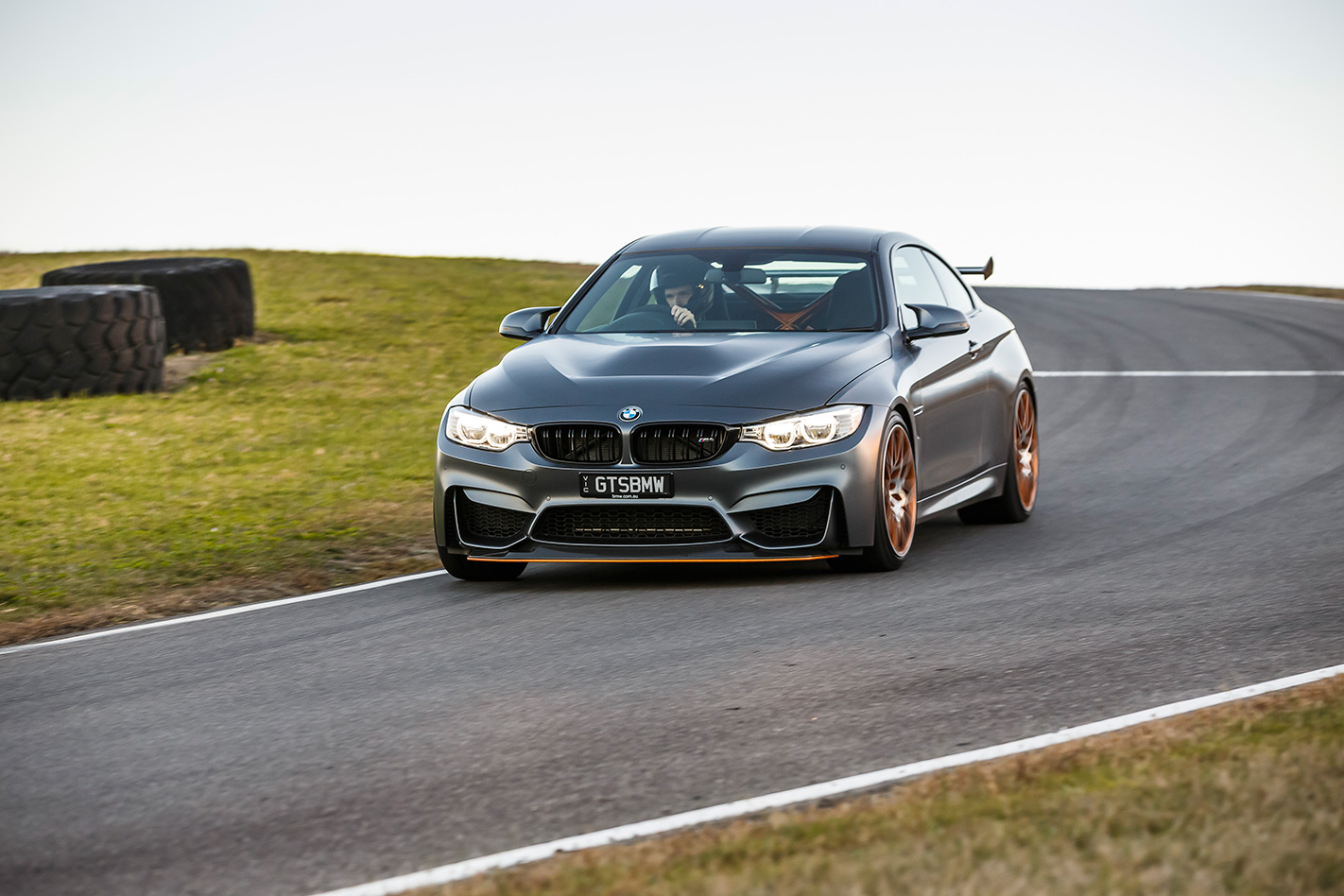
Even by the standards of the genre (911 GT3 et al) the BMW is tough work. Of course, all this will easily be forgiven if the M4 GTS is utterly scintillating to drive, but it’s not a car you just jump into and go flat-out. Wearing staggered Michelin Pilot Sport Cup 2 tyres (265/35 ZR19 front; 285/30 ZR20 rear), on cold rubber and damp roads the GTS will break into wheelspin in fifth gear on part-throttle.
Patience is needed to build tyre and brake temperature; then you’re rewarded with a car transformed. Certain M4 traits remain – the steering doesn’t offer much communication through the overly-thick wheel rim, for instance – however, with warm rubber you can commit to corners hard on entry and exit, safe in the knowledge there’s a stable base beneath you.
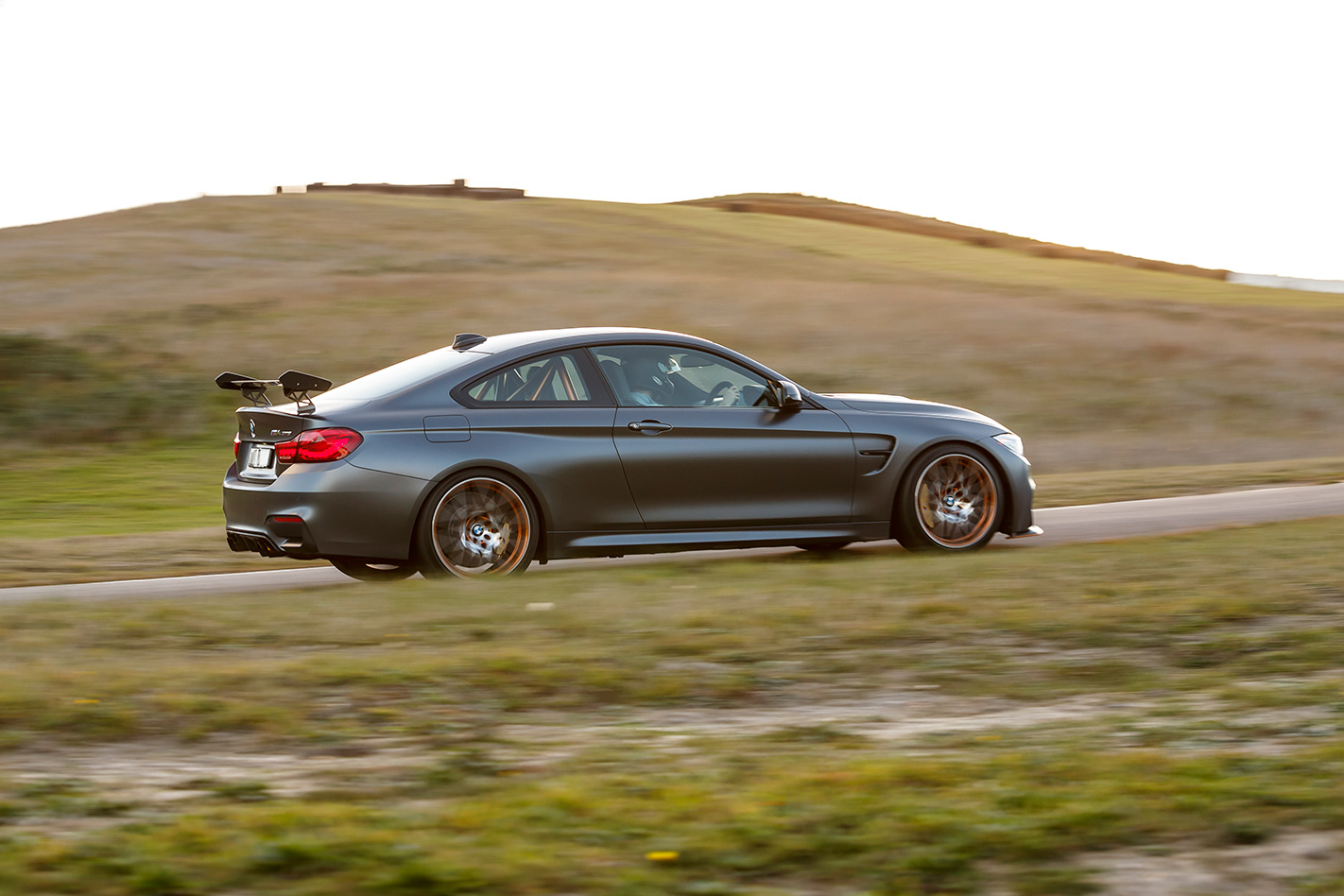
The giant carbon brakes (400mm/six-piston front; 380mm/four-piston rear) are massively powerful – stopping from 100km/h takes just 32.54m – with only the occasional kick of ABS intervention, and while the gearbox suffers the odd stumble around town, it works brilliantly at maximum attack, allowing up to 7000rpm on downshifts.
Suddenly the creaks and rattles cease to matter, not that you’ll be able to hear them over the insane exhaust note. The M4 GTS is one of the loudest, most raucous carson sale, with so much artillery fire on the overrun you’d swear it was running anti-lag. Sadly, this stability and confidence doesn’t translate from the road to the racetrack.
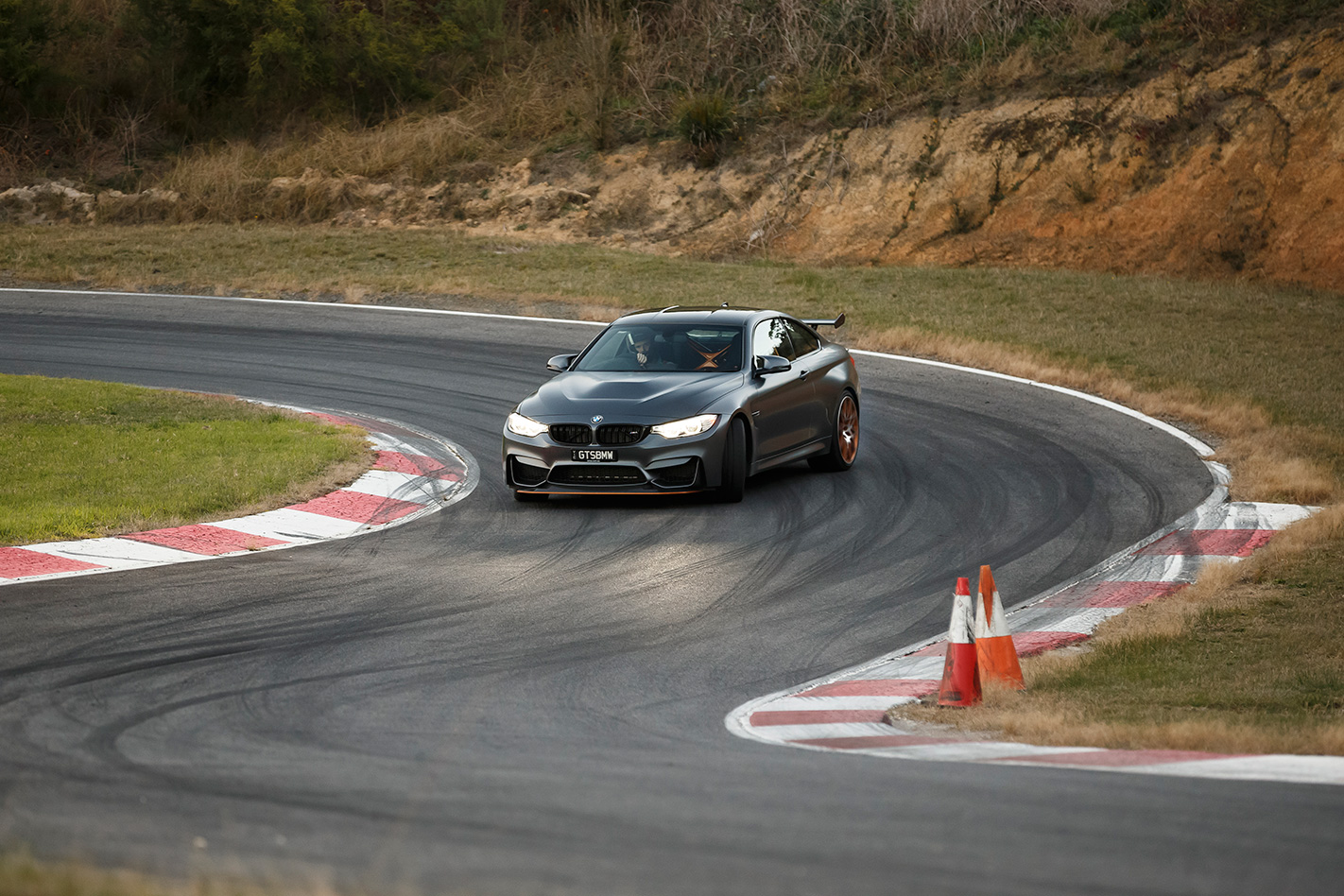
It peaked at more than 130km/h on its way to a best lap time of 1:00.20sec, though I never felt I particularly got the best out of it. And therein lies the problem. On the road, where you aren’t working at the absolute limit of adhesion, the GTS feels stable and trustworthy.
Yet, when you start to breach that limit on a race track it goes mute on you just when you want it to start talking the loudest. Bryant Park is almost purpose-built to trip a car up dynamically with blind crests, quick changes of direction and off-camber corners and the M4 GTS doesn’t offer enough communication for the driver to feel comfortable committing.
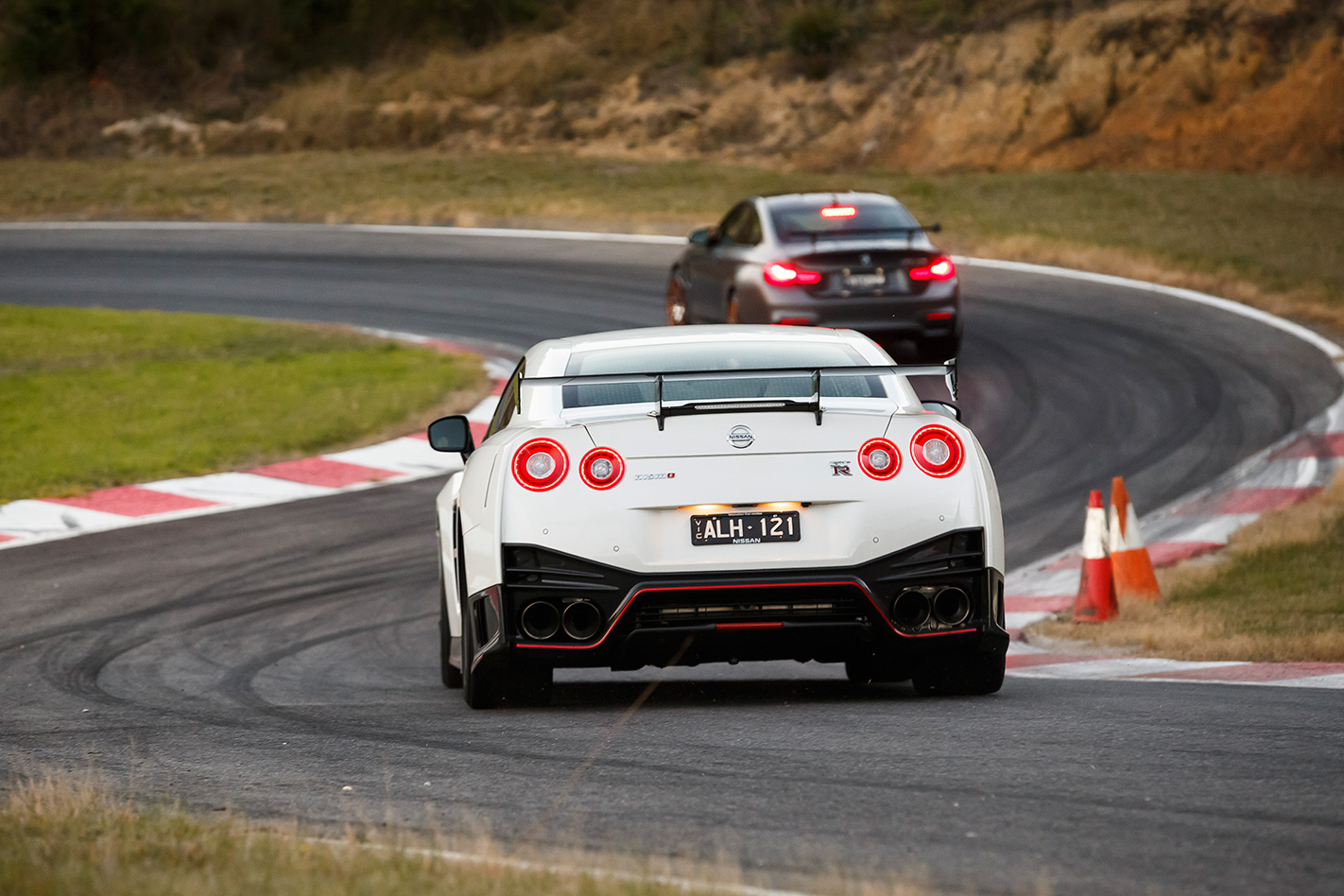
Simply put, it was a revelation around Bryant Park, like being allowed to steer a roller coaster. After only a handful of timed laps I was out of breath, exhausted by the forces involved and concentration required. The best of those laps was 58.90sec, a full 1.3sec clear of the BMW, however, despite the challenge of the M4 GTS, it’s possible the NISMO had even more to gain due to its stratospherically high limits.
Initial laps with the ESC in ‘R’ mode felt like the GT-R was trying to run with its shoelaces tied together. With the electronics off – though they won’t deactivate completely – it instantly went more than a second faster, rocketing out of turns with a hint of oversteer. The key to the NISMO’s success is its unbelievable front-end grip.
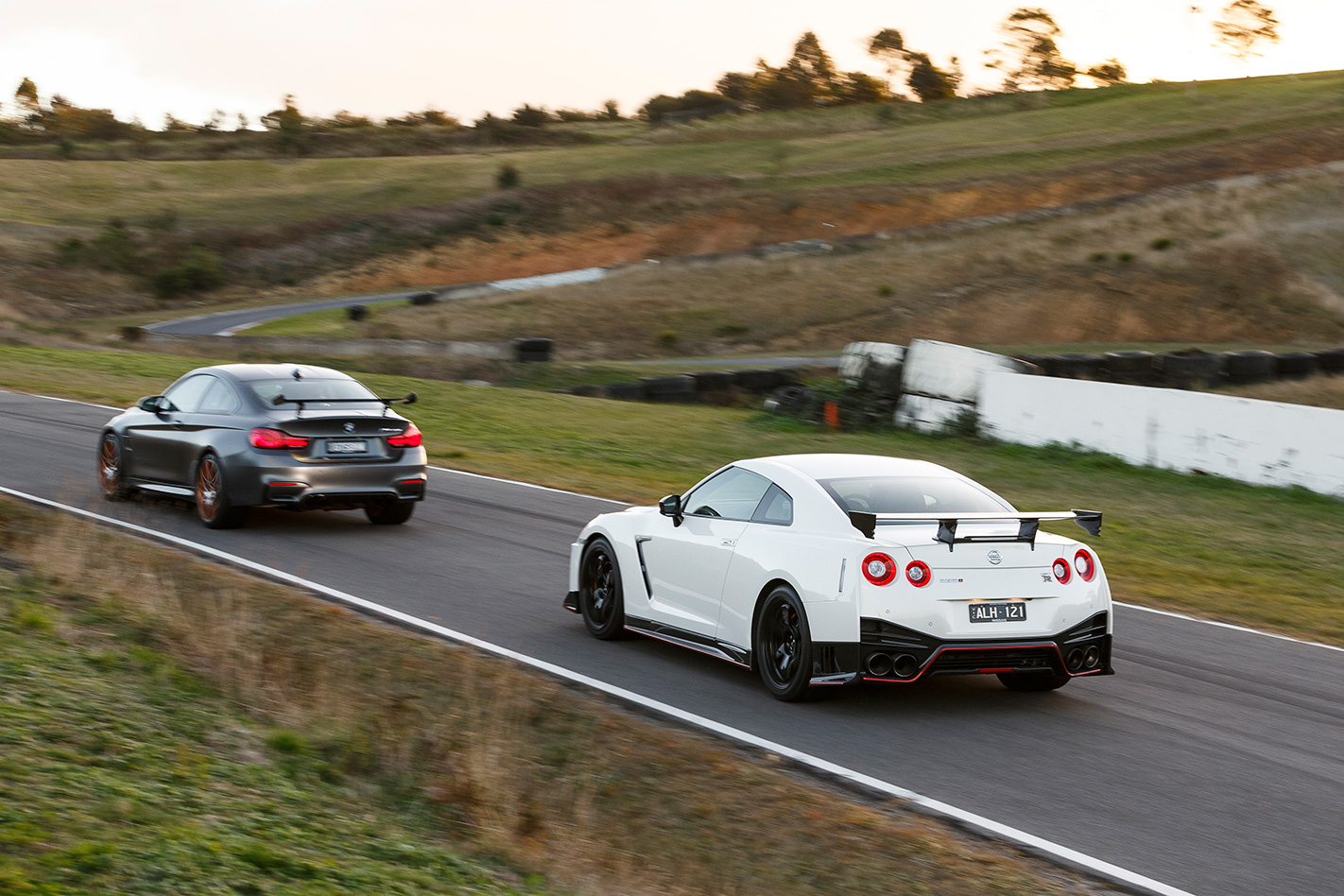
There are no fancy composite materials, just fully floating, two-piece rotors measuring 390mm front and 380mm rear gripped by six- and four-piston calipers respectively. The package offers incredible stopping power and brilliant feel with perfectly judged ABS calibration.
On the road this combination of talents makes the GT-R NISMO possibly the fastest point-to-point machine I’ve ever driven – only a Porsche 911 Turbo S comes close. Nor is it some PlayStation on wheels; the hydraulically-assisted steering offers plenty of feedback and if you’re clumsy with your inputs it will bite hard, violently pitching into oversteer.
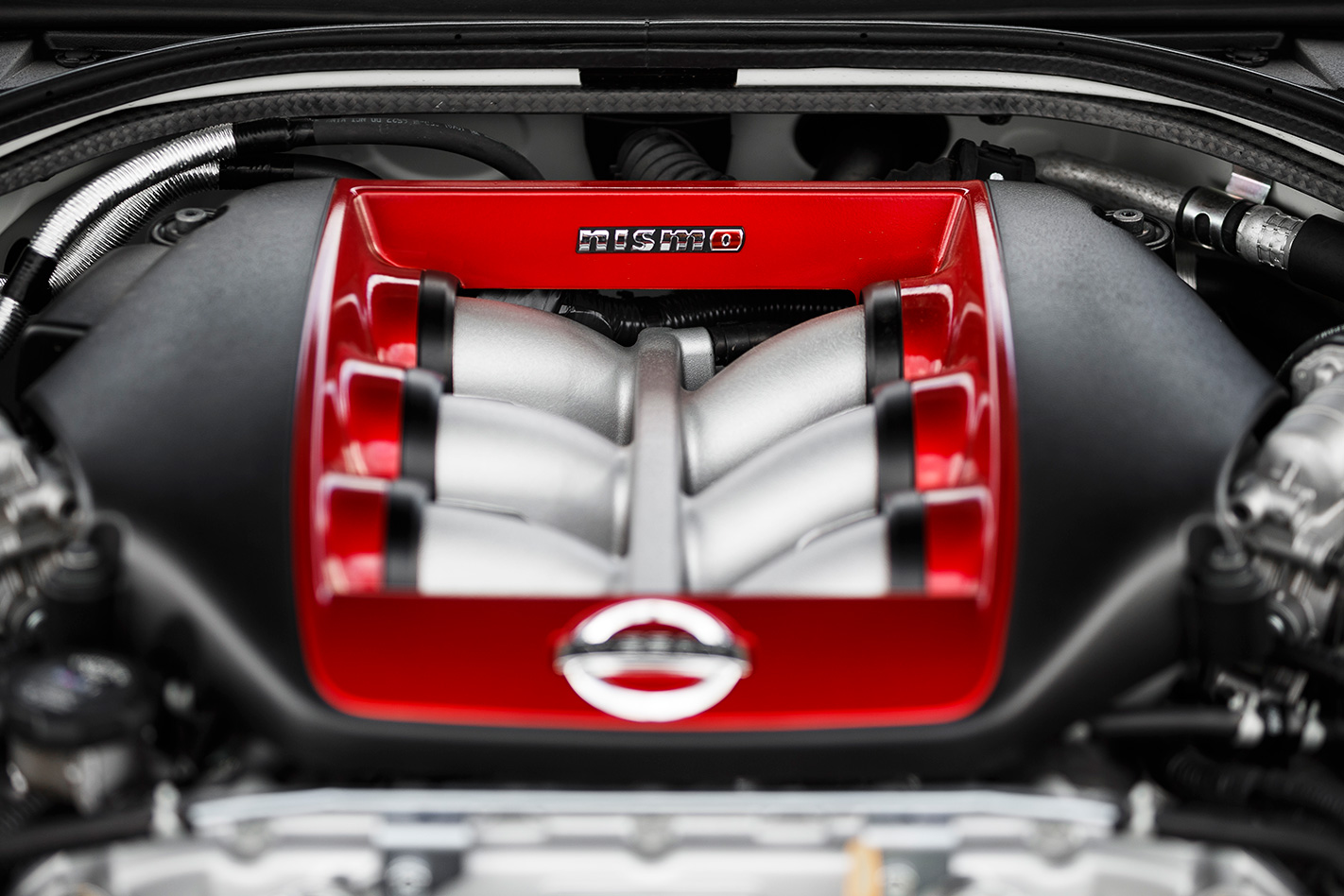
The extra 22kW/20Nm boost over a standard GT-R comes courtesy of larger turbochargers from the GT3 racecar, yet the powerband remains broad and its hunger for the 7000rpm redline undimished. It’s not the world’s best-sounding engine, its furious induction noise often bringing to mind the vacuum cleaner from hell, but my god is it effective.
Nissan’s 0-100km/h claim of 2.7sec is fanciful in the extreme, however, reaching triple figures in 3.28sec and crossing the quarter mile in 11.19sec is no mean feat. To be honest, we’ve recorded similar numbers in a standard GT-R, but the NISMO’s extra grunt is evident in its 203.08km/h trap speed, almost 5km/h faster than we’ve recorded in a regular R35.
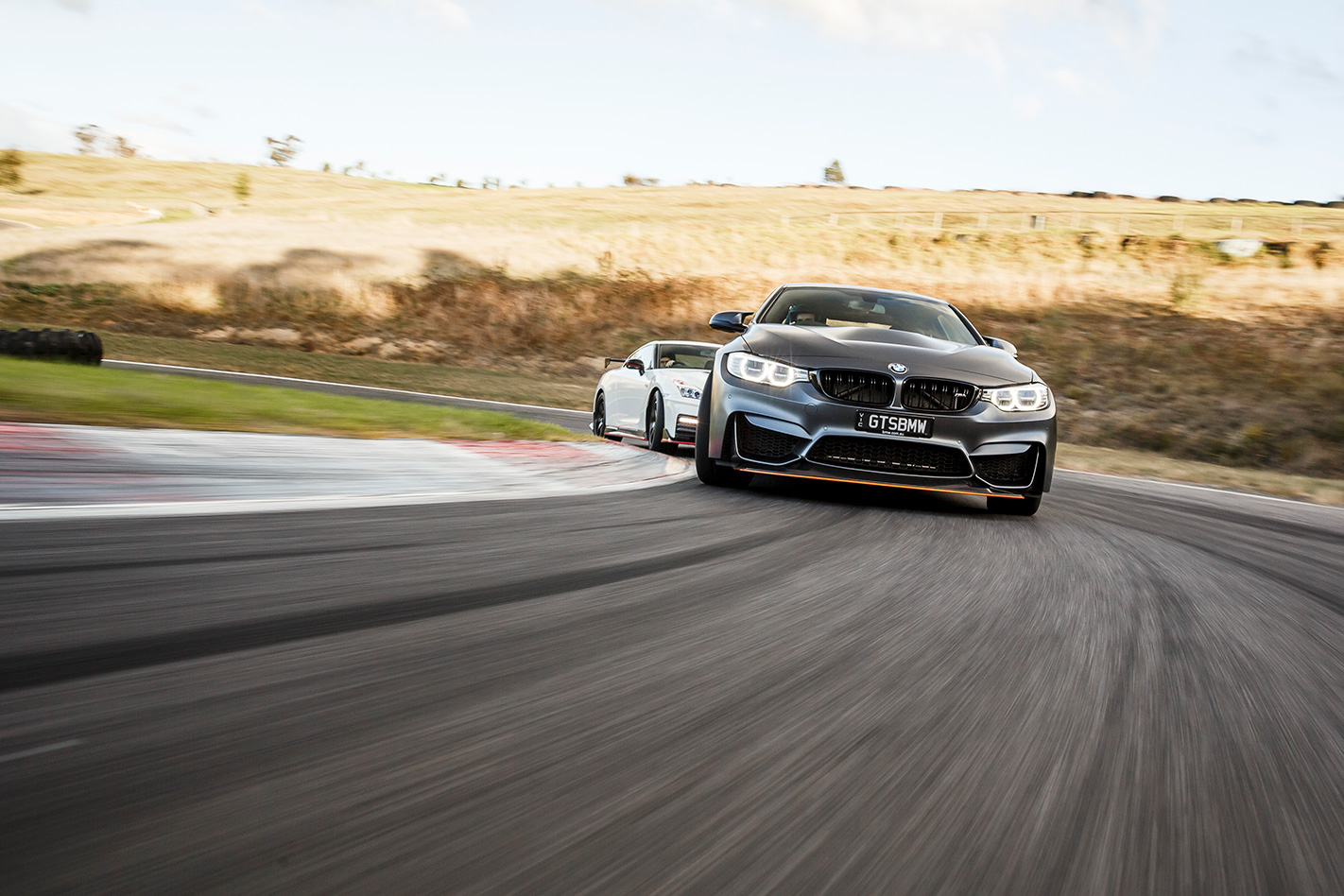
Which is ultimately a big part of the reason we’re left largely unimpressed by the M4 GTS. It’s very quick in its own right and looks and sounds wild, but it’s little quicker and not as enjoyable on the limit as a regular M4 Competition while costing almost twice as much.
Perhaps it would’ve shone at a faster track, perhaps adjusting the suspension settings brings it to life, but perhaps it’s the ultimate expression of the M Division’s recent philosophy that’s resulted in fast, yet flawed cars like the F10 M5 and current M3/M4 siblings.
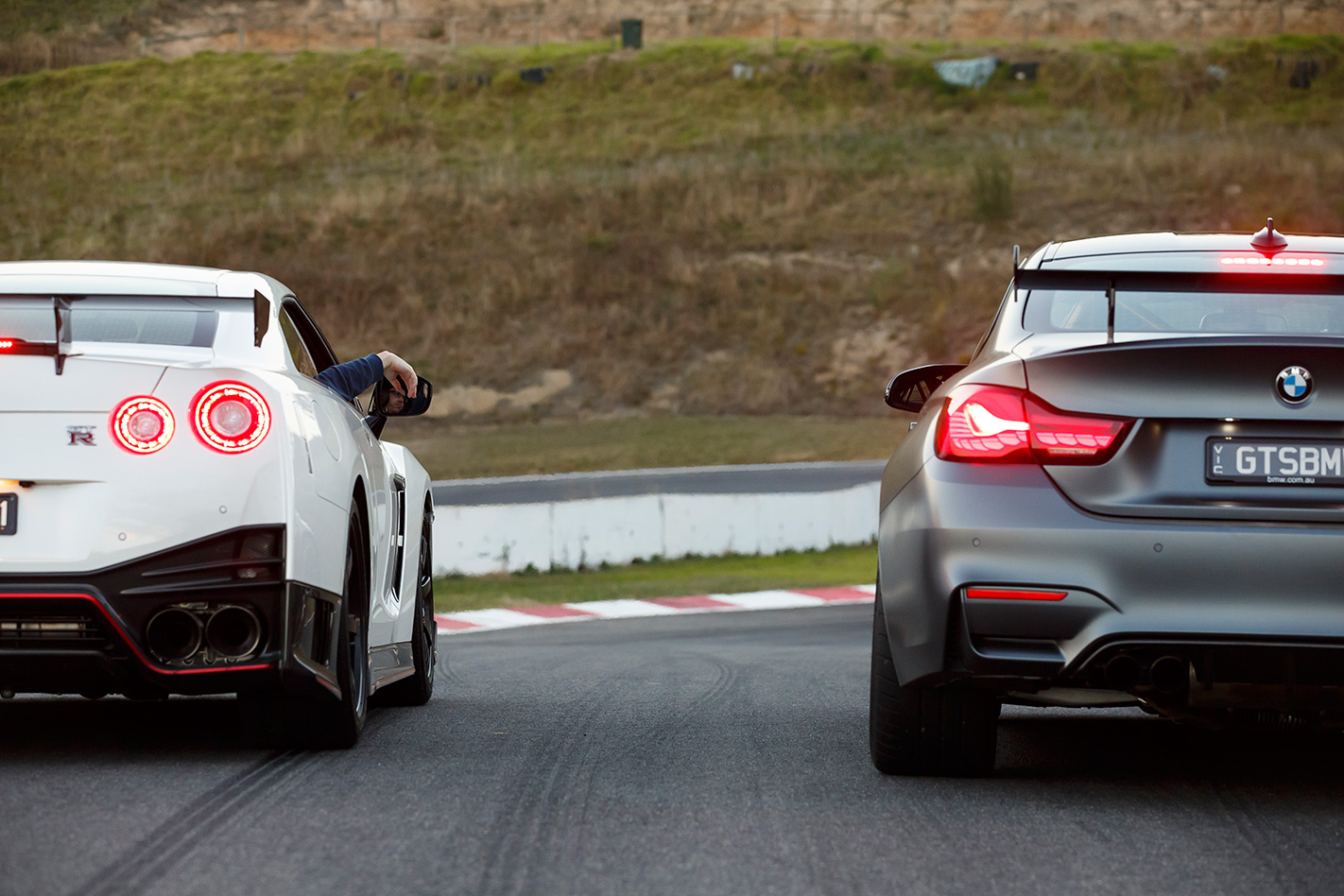
It’s more comfortable and useable day-to-day, much faster in a straight line, yet also the quicker and more rewarding car at tracks both fast and slow. The GT-R Track Edition, which scores most of the NISMO’s chassis tweaks for $70,000 less, is arguably the smarter buy, however the NISMO definitely feels special in a ‘real life Gran Turismo’ kind of way.
In this instance, the BMW M4 GTS proves less can sometimes be less, while the Nissan GT-R NISMO proves more can also be more.
2017 BMW M4 GTS SPECS: BODY: 2-door, 2-seat coupe ENGINE: 2979cc inline-6cyl, DOHC, 24v, twin-turbo POWER: 368kW @ 6250rpm TORQUE: 600Nm @ 4000-5500rpm TRANSMISSION: 7-speed dual-clutch TYRES: Michelin Pilot Sport Cup 2 PRICE (as tested): $294,715
2017 NISSAN GT-R NISMO SPECS BODY: 2-door, 4-seat coupe ENGINE: 3799cc V6, DOHC, 24v, twin-turbo POWER: 441kW @ 6800rpm TORQUE: 652Nm @ 3800-5600rpm TRANSMISSION: 6-speed dual-clutch TYRES: Dunlop Sport Maxx GT 600 PRICE (as tested): $299,000






